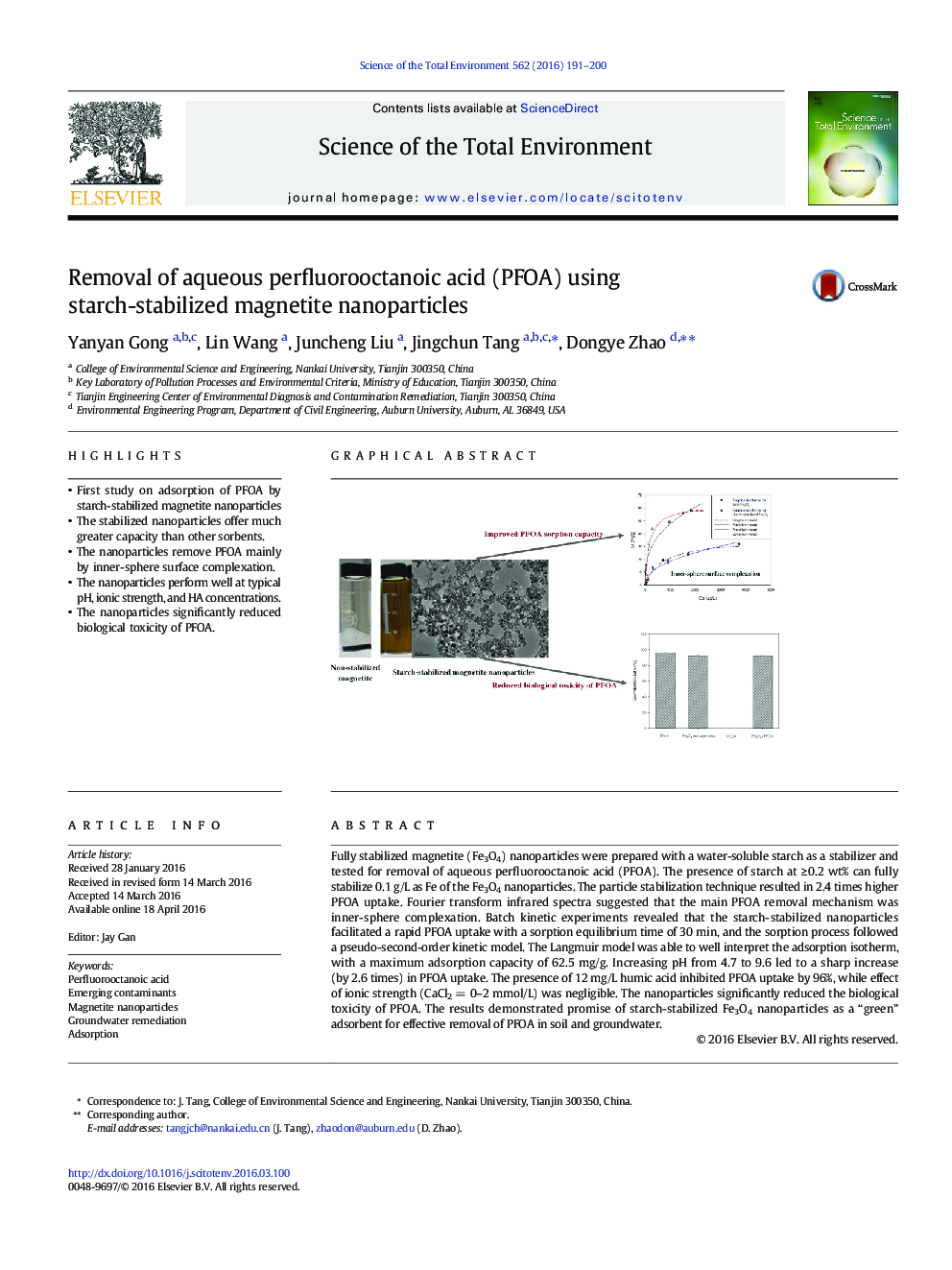| Article ID | Journal | Published Year | Pages | File Type |
|---|---|---|---|---|
| 6321651 | Science of The Total Environment | 2016 | 10 Pages |
â¢First study on adsorption of PFOA by starch-stabilized magnetite nanoparticlesâ¢The stabilized nanoparticles offer much greater capacity than other sorbents.â¢The nanoparticles remove PFOA mainly by inner-sphere surface complexation.â¢The nanoparticles perform well at typical pH, ionic strength, and HA concentrations.â¢The nanoparticles significantly reduced biological toxicity of PFOA.
Fully stabilized magnetite (Fe3O4) nanoparticles were prepared with a water-soluble starch as a stabilizer and tested for removal of aqueous perfluorooctanoic acid (PFOA). The presence of starch at â¥Â 0.2 wt% can fully stabilize 0.1 g/L as Fe of the Fe3O4 nanoparticles. The particle stabilization technique resulted in 2.4 times higher PFOA uptake. Fourier transform infrared spectra suggested that the main PFOA removal mechanism was inner-sphere complexation. Batch kinetic experiments revealed that the starch-stabilized nanoparticles facilitated a rapid PFOA uptake with a sorption equilibrium time of 30 min, and the sorption process followed a pseudo-second-order kinetic model. The Langmuir model was able to well interpret the adsorption isotherm, with a maximum adsorption capacity of 62.5 mg/g. Increasing pH from 4.7 to 9.6 led to a sharp increase (by 2.6 times) in PFOA uptake. The presence of 12 mg/L humic acid inhibited PFOA uptake by 96%, while effect of ionic strength (CaCl2 = 0-2 mmol/L) was negligible. The nanoparticles significantly reduced the biological toxicity of PFOA. The results demonstrated promise of starch-stabilized Fe3O4 nanoparticles as a “green” adsorbent for effective removal of PFOA in soil and groundwater.
Graphical abstractDownload high-res image (243KB)Download full-size image
